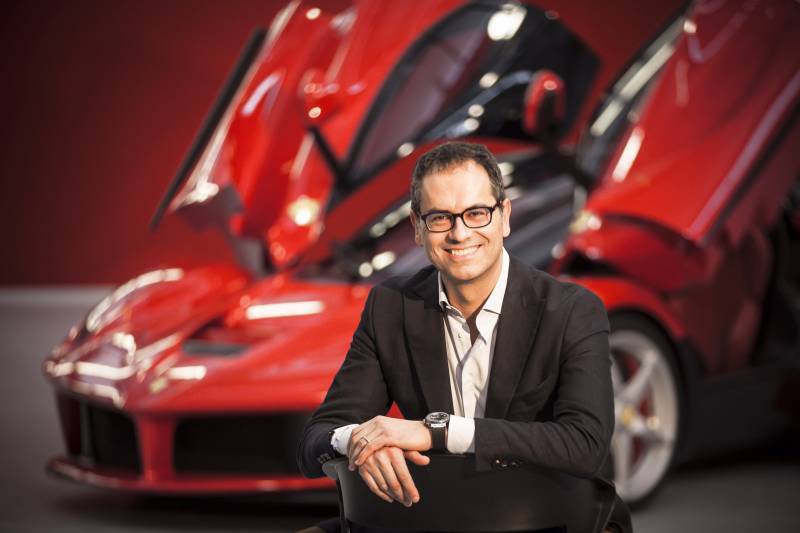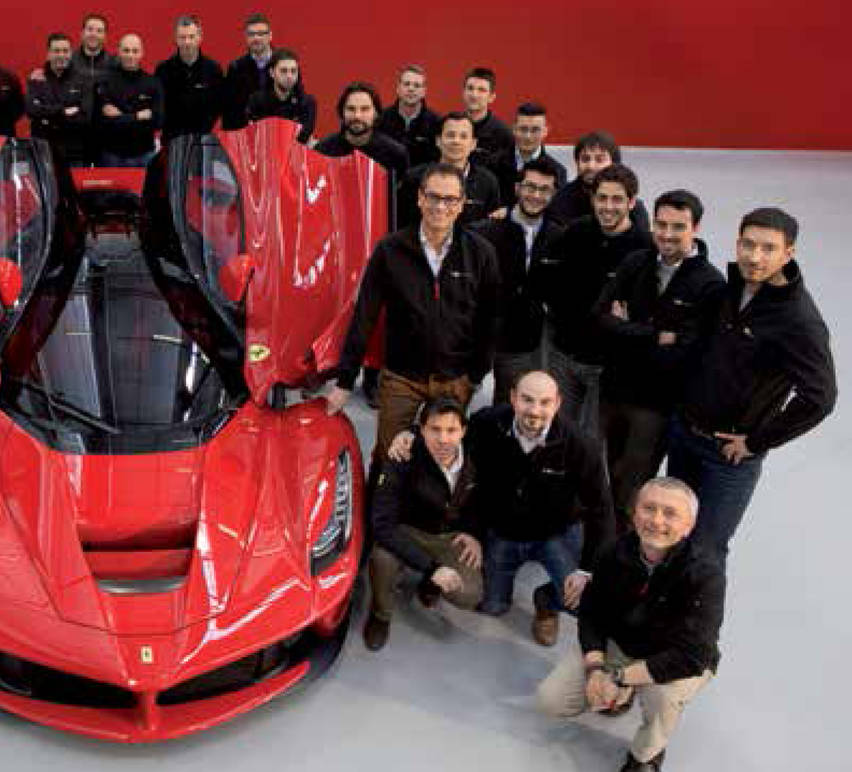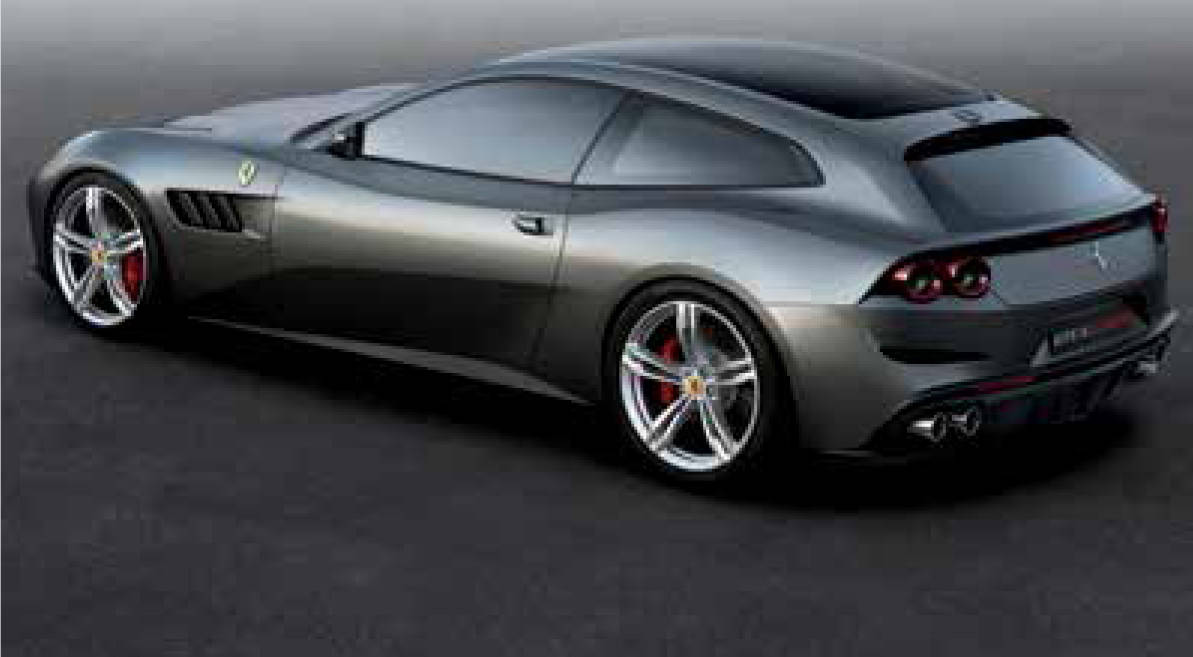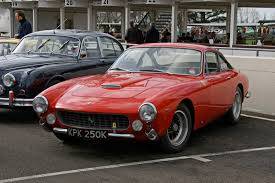Synergic Design Thinking
Geneva. Motor Show. Inside the “salon of salons” of Europe’s automobile industry, the atmosphere is electrifying. The occasion is not to be missed by those employed in the industry as well as car lovers who are happy just to dream in the passenger seat.
This year the dream of dreams, as far as concerns Italy, is once more linked to Ferrari. The legendary manufacturer’s new design miracle marries innovation and technique. Yet again ushering in this new creature—the Ferrari GTC4 Lusso—is Flavio Manzoni, the Sardinian-born designer and Ferrari’s Senior Vice President of Design.
We sat down to talk to our “old friend” whom we’ve had occasion to see several times in New York. We couldn’t let him speed off without finding out how the latest Italian design came to be and where it will take us.
Designing a Ferrari is the finish line every car designer dreams of crossing. Why is that? Is it the honor of working with legendary brand, cherished the world over? Or is it the challenge of working on such a sophisticated and efficient “technological body?”
I think the prestige that comes with designing a Ferrari depends on both. First of all, there’s the very powerful and deep-seated symbolic value that the Ferrari brand represents in the collective imagination, which is reinforced by the leadership role Ferrari has long played in the world of automobiles.
Second, and just as important, are the technical and performance requirements of these cars, which lead to a series of particularly limiting restrictions. That’s the real challenge for architects and designers. Every new car emerges from an awareness of which technical elements will meld with a design. We are constantly working on highly complex subjects, but that’s key to designing a Ferrari: it originates from the configuration of all the components and technological aspects that come into play.
You direct the Ferrari Style Center, which was created in 2010 as an operating branch within the Maranello factory. What does it do?
We work on the development, style, and construction of models and prototypes. We’re “in-house” and work closely with the various engineering departments. We also have a “modeling” department and an area dedicated to visualizing virtual models. [Founding the Center] is a significant chapter in Ferrari’s recent history, which has now united the ascribable competencies in the creative- design field with an important operating function that is always growing.
The goals of the new department include responding to the diversification of production models in series and limited- edition series; fostering tailor made automobiles; contributing to the development of an innovative language and rock solid brand identity that is in step with the importance assigned to aesthetic beauty as one of the determining factors of Ferrari’s DNA.
You mean synergic design. The designers at the Ferrari Style Center do more than just “stylize”...
Exactly. Ferrari Design’s proximity to the company’s other departments, in particular the Development Center, facilitates our sharing tasks and constantly exchanging information. That interaction allows my team of designers to step outside their purely stylistic roles, which could be reductive, and have a say in selecting projects, with a common goal being to make an excellent product.
One of the peculiar things about Ferrari Design’s modus operandi is that very synergy established between designers, engineers, and technicians. That dialogue often complements the proposals of specialists in different fields. Therefore the job of the designer is to connect technical requirements with formal requirements, and simultaneously develop a digital 3-D model and “a real” one, in a fruitful commingling of state-of- the-art technology and manual labor. It’s a fascinating model for working, based on an idea you’ve expressed before: that the visual arts and design—taken at their fullest meaning—are closely related and share the same roots. In your professional experience, how have you combined creative invention and technical planning?
Tackling complicated technical questions and interacting with engineers and aerodynamics specialists is all in a day’s work for the Ferrari Design team. Our Style Center was built to be flexible and foster exchanging roles to our advantage. That flexibility enriches everyone involved, from a professional and human standpoint. A new Ferrari design is sparked by an awareness and understanding of technical restrictions that the designer finds himself faced with. It’s a roundabout path. Not infrequently, technological and regulatory aspects or production needs generate creative solutions that are important not just aesthetically but also on a functional level.
Technology, sportsmanship, innovation, research, aesthetics, beauty, memory, passion: they’re recurring terms, distinct yet complementary categories. What is it that holds them all together? What is the “Ferrari mood” (to use a particularly trendy expression)? What is the mood behind every automobile, enclosed with each new product?
The elements on your list can’t be divorced from each other. They form part of the path the company has embarked on and continues to advance with new stimuli and goals. Every Ferrari can be seen in three different ways. The first is connected to context, to Maranello and the surrounding area, to the spaces we live and work in, to the people we meet. Some means of still invoking the charismatic personality and presence of its founder, Enzo Ferrari. Then there’s the creative aspect, the kind that turns the blueprint of a car into a truly artistic and technical experience, actual and industrial. Last but not least, there’s its design, which, broadly speaking, consists in a designer’s depth of thinking as well as sensibility and attitude.
So, tradition meets innovation. That typically Italian combo – characteristic of a country with such a long history and a creative bent recognized around the world – lies at the heart of the Ferrari legend. That explains why Ferrari remains at the top of the design world, the leader of the evolution of the automobile in the 21st century, with one eye on the past and one eye aimed at the future.
Newborn: Ferrari GTC4 Lusso
The latest creation in the automobile series industry, the Ferrari GTC4 Lusso designed by the Ferrari Style Center under the direction of Flavio Manzoni is currently camped out at the Geneva Motor Show, where it’s a crowd magnet.
Ferrari’s new grand touring four-seater with a shooting brake silhouette has redefined the profile of a coupe. Its balanced volume is in keeping with a performance car and comes equipped with a front-engined V-12, four-wheel traction, and plenty of interior room.
“For a long time,” says Manzoni, “we wondered whether to pursue the idea of an architecture of volumes. In the end we did, for the usability and versatility such a solution consented. By inserting the spoiler and lowering the roof, we were able to achieve the perfect proportions.”
The name alludes to the historic 250 GT Lusso (1962), one of Enzo Ferrari’s most beloved cars, and the 330 GTC (1966), nodded to by the rear fender air vent detail. The allusions are subtle, however, and have been fully absorbed to generate captivating new forms, rather than as a pretext for digging up historic details.
If you look carefully at the design of the GTC4 Lusso, you’ll be blown away by the harmonious design that creates a trompe l’oeil effect, visually lightening the side of the car and giving a fascinating, fresh impression of more three dimensionality.
The GTC4 Lusso’s interior is also the result of a totally new design, including an innovative dual cockpit specifically designed to incorporate new technological devices like the 10.25-inch touchscreen as well as a second, multi-functional screen for the passenger, so that s/he can share in the thrill of driving.
However different, the F12 TDF and the GTC4 Lusso exemplify what Manzoni calls “a linguistic code that is common to and distinguishes the work of Ferrari Design.









































i-Italy
Facebook
Google+
This work may not be reproduced, in whole or in part, without prior written permission.
Questo lavoro non può essere riprodotto, in tutto o in parte, senza permesso scritto.